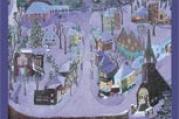Click here if you don’t see subscription options







Open to God
John A. Coleman, S.J., is rightly concerned by a theory of civil law that is excessively entangled with theological doctrine (Religious Liberty, 11/28). The official Catholic position on the numerous moral issues to which he refers certainly is theological doctrine. But it is also the objective teaching of human, moral reasoning. If not based on such reason, civil law runs the risk of a tyrannical positivism with no determining criterion other than the wish of the most powerful (which is not necessarily the majority).
Furthermore, if objective moral reasoning is not to be the content of civil law (in matters, of course, which evoke morality), then what else is to replace it? Legislating immorality or amorality seems to be, as experience proves, the only alternative. There is no moral neutrality. While that might save us from distasteful theories of too much God in civil law, it might well lead to irrational or nonrational law and to a society that follows suit. The fact that a society is open to God does not mean it is bereft of reason. Indeed, the opposite is more likely.
(Msgr.) Peter Magee


Surprise Memorial
Many thanks to Robert Ellsberg for his scholarship and recent reflection, Five Years With Dorothy Day (11/21). This remarkable woman, arguably the greatest American Catholic of the 20th century, I include in religious education classes at our Catholic secondary college.
A visit to New York this year afforded me the opportunity to seek out her grave. It took several phone calls to the Catholic Worker to find out the precise location of her resting place. On a sunny Sunday April afternoon, my wife and I drove to Staten Island to pray at the seaside cemetery. Having visited Lincoln’s grave in Springfield, Ill., reflected before the pool-surrounded tomb of Martin Luther King Jr. in Atlanta and often guided family and friends through Arlington Cemetery, I eagerly anticipated the visit to Dorothy’s resting place. Americans brilliantly celebrate in symbol and stone famous people and important events, but memorial was a real surprise.
Upon entering the cemetery grounds we began our search. The Catholic brochure did not mention this famous figure. The attendant at the information center, though initially unsure of the location, finally guided us to her resting place on the side of the road. Her plaque was not different from the hundreds of other plain marble blocks resting on the grass with a simple name and two dates. I was reminded of the difference between the ostentatious Roman tombs of some popes and the elegantly simple resting places of others.
Given her commitment to the poor, the humble plaque is somewhat fitting; but for those who want to visit and pray, could there at least be a sign? It is intriguing that the Catholic community of New York does not seem to celebrate her memory in this place. If I taught in New York, I would take Catholic classes to her grave on pilgrimage.
As my 12th-year students scrutinize her life, I hope some are empowered by her unrivaled story. The works of mercy echo a Gospel call: Care for the sick, help the poor, enlighten and rebuke. I especially appreciate the last maxim, knowing her fearless denunciation of priests, politicians and presidents. We are emboldened by the spirit of great people, and their resting places elicit prayer and encourage Christian action.
Joe Doolan

